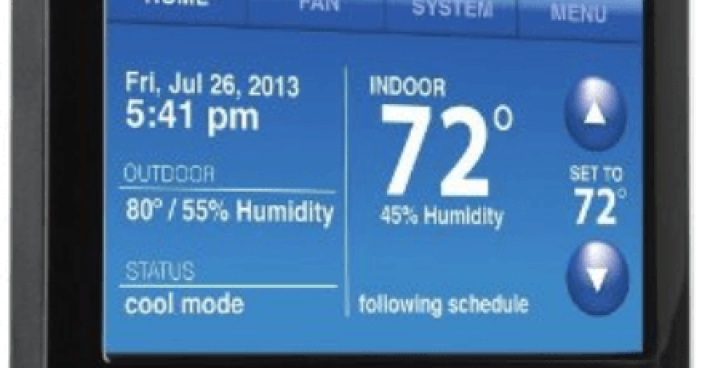No point in paying for energy you’re not using. Here are some energy management tips and easy ways to spend less money on heating at work.
Get a new thermostat
It’s worthwhile to replace old thermostats because newer ones have multiple user-friendly settings that cater to your temperature needs. New thermostats make your AC more energy-efficient than old unresponsive ones.
Adjust the temperature to your use
As an energy management practice, set the thermostat to 18C (64F), at the beginning and end of your workday, and lower to 16C (61F) during periods of maximum activity. You want to see people wearing a sweater or jacket when working, especially when working at a computer.
For areas that are used frequently or open for holidays, you can turn the temperature down to 10C (50F) as an energy management practice so that the water pipes don’t freeze and burst.
Maintain equipment
Check with your landlord that the HVAC unit is maintained quarterly, and that its filter is also changed. This ensures the HVAC’s heater doesn’t have to work as hard and is energy-efficient, which means you’re not spending as much to operate it. Ceiling heaters also should be maintained regularly.
Clean the air intake and diffusers
Take a look at the ceiling diffusers where the heat enters the office. Are the surrounding ceiling tiles black? If so, the diffusers should be cleaned regularly for maximum comfort and energy efficiency. Also, for maximum energy efficiency and comfort, check the ceiling air intakes to be sure they do not have any buildup of residue.
Install ceiling fans
For good energy management, if you have high ceilings, install ceiling fans to push down the warm air where it is needed.
Keep your window blinds down
Windows are the biggest source of heat loss, even if you have energy-efficient windows. Add an extra layer of insulation by keeping your blinds down. This can make a difference of several degrees and serves as an energy management solution.
Invest in a revolving door or vestibule
Do you have exterior doors? Prevent the cold air from coming directly in by having a revolving door. As an energy management tip, ensure that when the door stops the seals line up with the door frames to keep the cold air out. Or, you can use a vestibule, which allows the outer door to close before entering the room. This reduces the cold air coming directly into the room, making the AC energy-efficient.
Ensure adequate roof insulation
Check with your landlord to see if the roof insulation meets current standards. Complying with the standards will lead to an energy-efficient work place.
Check out rebates
Check your heating company’s website for rebates on equipment that reduces your energy consumption. Believe it or not, natural gas and electricity companies want you to use less energy and be energy-efficient! Why? They don’t want to deal with irate customers complaining about big bills!
As heating costs go up, so does efficiency. You could end up paying less than you do now with older technology! All it takes is a change in culture to use less energy in the first place and adopt good energy management!
FirstCarbon Solutions (FCS) helps organizations recognize business drivers for sustainability practices and offers cost-effective sustainability management solutions. FCS provides guidance on industry best practices and can help you with your sustainability programs. For more information on other sustainability solutions, read this article from our monthly newsletter, GreenWatch.






